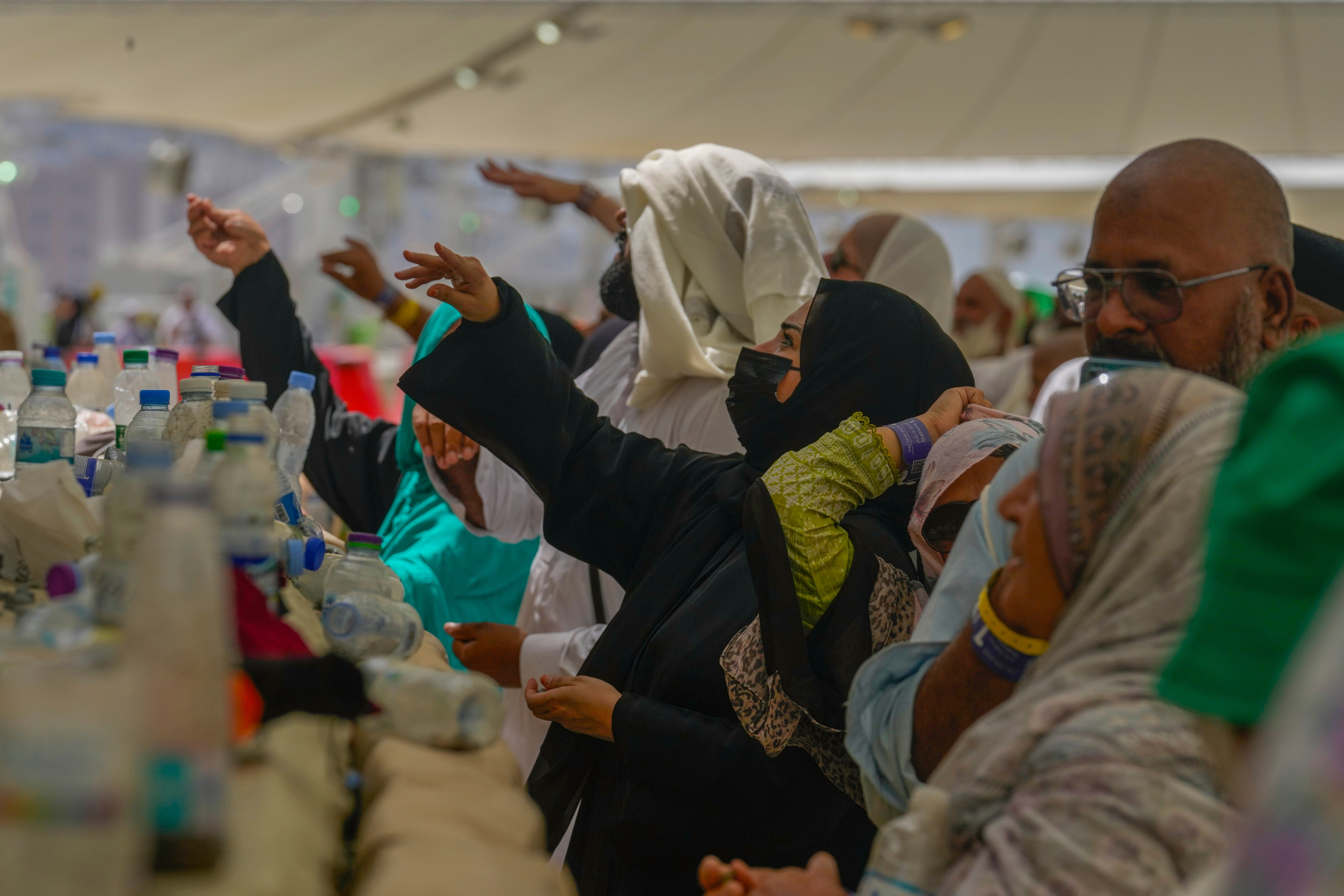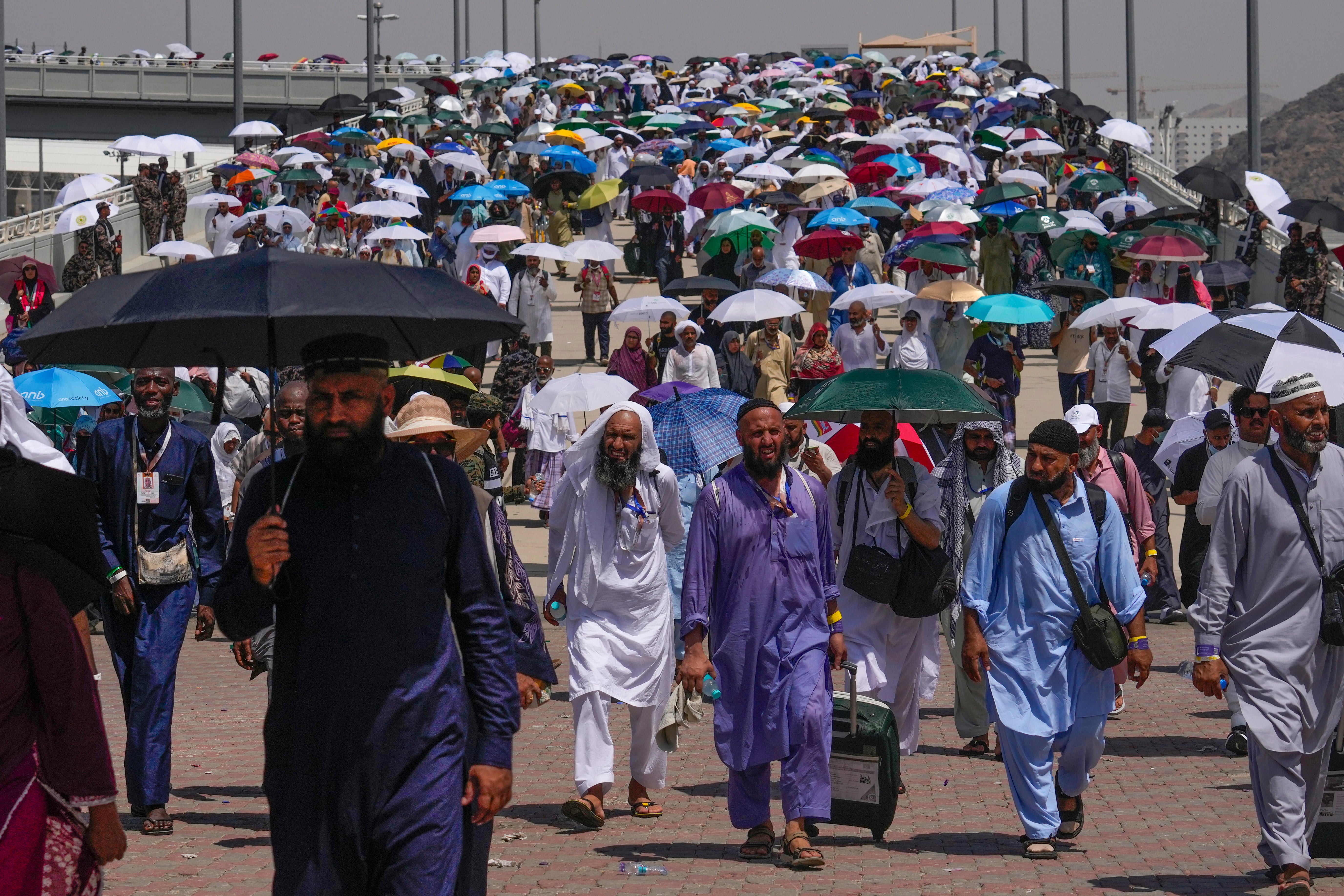Hundreds of Hajj pilgrims die as temperatures touch 51C in Saudi Arabia
More than 1.83 million Muslims have performed the Hajj this year
Your support helps us to tell the story
From reproductive rights to climate change to Big Tech, The Independent is on the ground when the story is developing. Whether it's investigating the financials of Elon Musk's pro-Trump PAC or producing our latest documentary, 'The A Word', which shines a light on the American women fighting for reproductive rights, we know how important it is to parse out the facts from the messaging.
At such a critical moment in US history, we need reporters on the ground. Your donation allows us to keep sending journalists to speak to both sides of the story.
The Independent is trusted by Americans across the entire political spectrum. And unlike many other quality news outlets, we choose not to lock Americans out of our reporting and analysis with paywalls. We believe quality journalism should be available to everyone, paid for by those who can afford it.
Your support makes all the difference.Hundreds of people have died during this year’s Hajj pilgrimage in Saudi Arabia, with temperatures as high as 51C recorded this week.
Saudi Arabia has not commented on the death toll during the pilgrimage – a ritual that every able Muslim is required to undertake once in their life – nor offered any cause of death for those who have died. However, hundreds of people lined up at the emergency complex in the neighbourhood of al-Muaisem in Mecca, trying to get information about their missing family members.
One list circulating online suggested that at least 550 people died during the five-day Hajj. One medic, who spoke on condition of anonymity to discuss information not released publicly by the government, said that the names listed appeared to be genuine. That medic and another official, who also spoke on condition of anonymity, said they believed there were at least 600 bodies at the facility. The list of names did not specify cause of death.
At least 323 of those who died were Egyptians, most of them succumbing to heat-related illnesses, according to two Arab diplomats tasked with coordinating their countries’ responses. “All of [the Egyptians] died because of heat” except for one who sustained fatal injuries during a minor crowd crush, one of the diplomats said. One hundred and forty-four Indonesian citizens died during Hajj, according to data the Indonesian health ministry shared on Tuesday. The data did not specify whether any of the deaths were due to heat stroke.
Each year, the Hajj draws hundreds of thousands of pilgrims from low-income nations, “many of whom have had little, if any, pre-Hajj healthcare”, an article in the April edition of the Journal of Infection and Public Health said.
Temperatures hit 51.8C at the Grand Mosque in Mecca on Monday, the Saudi national meteorology centre said. On Tuesday, the mercury reached 47C. Onlookers saw some people faint while trying to perform the symbolic stoning of the devil. Others, including many Egyptians, lost track of their loved ones in the heat and the crowds.

More than 1.83 million Muslims have performed the Hajj in 2024, including more than 1.6 million pilgrims from 22 countries and around 222,000 Saudi citizens and residents, according to the Saudi Hajj authorities.
On Wednesday, at the medical complex in Mecca, an Egyptian man collapsed to the ground when he heard the name of his mother listed among the dead. He cried for some time before grabbing his mobile phone and calling a travel agent, shouting: “He left her to die!” as the crowd tried to calm him.
Security appeared to be tight at the complex, with an official reading out names of the dead and their nationalities. They included people from Algeria, Egypt and India. Those who said they were relatives of the dead were allowed inside to identify their loved ones.
It was not possible to independently confirm cause of death at the complex. Saudi officials did not respond to questions seeking more information.

The kingdom’s ruling al-Saud family maintains a major influence in the Muslim world through its oil wealth and its management of Islam’s holiest sites. Like Saudi monarchs before him, King Salman has taken the title of the custodian of the two holy mosques, referring to the Grand Mosque in Mecca – home to the cube-shaped Kaaba, which Muslims pray towards five times a day – and the Prophet’s Mosque in the nearby city of Medina.
Saudi Arabia has spent billions of dollars on crowd control and safety measures for those attending the annual five-day pilgrimage, but the sheer number of participants makes ensuring their safety difficult.
The climate crisis could make the risk even greater. A 2019 study by experts at the Massachusetts Institute of Technology found that even if the world succeeds in mitigating the worst effects of climate change, the Hajj would be held in temperatures exceeding an “extreme danger threshold” from 2047 to 2052, and from 2079 to 2086.
Islam follows a lunar calendar, so the Hajj falls around 11 days earlier each year. In 2030, the Hajj will occur in April, and over the next several years it will fall in the winter, when temperatures are milder.
A 2015 stampede in Mina during the Hajj killed more than 2,400 pilgrims, the deadliest incident ever to strike the pilgrimage. Saudi Arabia has never acknowledged the full toll of the stampede. A separate crane collapse at Mecca’s Grand Mosque, which preceded the Mina disaster, killed 111 people.
The second-deadliest incident at Hajj was a stampede in 1990 that killed 1,426 people.
Associated Press
